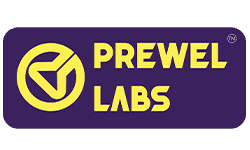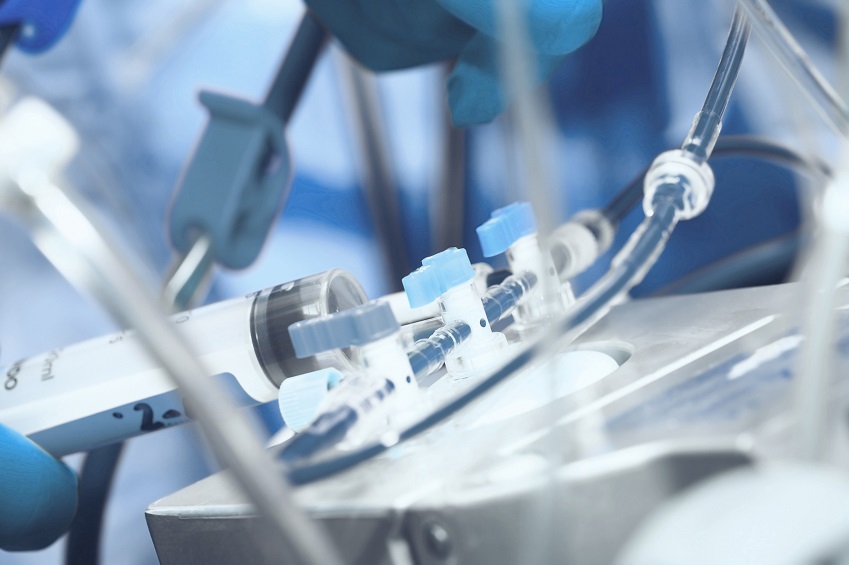Introduction- The Ethylene Oxide Enigma
In healthcare, every component, from surgical tools to diagnostic devices, plays an unequivocally important role in ensuring patient safety and treatment efficacy. However, lurking beneath the surface lies a silent concern – the presence of ethylene oxide (EO) traces on medical devices. Unveiling the effects of EO residues is not just a matter of technical scrutiny but a key endeavour to safeguard patient well-being and uphold the integrity of medical practices.
Understanding Ethylene Oxide
Ethylene oxide, a colourless gas, serves as a crucial agent in sterilizing medical equipment due to its potent antimicrobial properties. Despite its effectiveness, concerns arise regarding the residual EO left on devices post-sterilization. Even minute traces of EO can potentially pose health risks when in contact with patients.
The Unseen Threat
While the use of EO ensures the elimination of harmful pathogens, its residual presence raises valid concerns. Prolonged exposure to even low levels of EO has been associated with adverse health effects, including irritation of the eyes, skin, and respiratory tract. Moreover, studies suggest a potential link between EO exposure and carcinogenicity, underscoring the gravity of this issue.
Navigating Regulatory Standards
Given the potential risks, regulatory bodies worldwide have established stringent guidelines to monitor EO levels on medical devices. These standards aim to strike a delicate balance between ensuring sterility and mitigating potential health hazards. Compliance with these regulations is not just a legal obligation but a moral imperative to prioritize patient safety above all else.
Championing Patient Advocacy
In the realm of healthcare, patient advocacy serves as the cornerstone of ethical practice. It is incumbent upon healthcare providers, manufacturers, and regulatory agencies to prioritize patient welfare by adhering to rigorous quality control measures. Transparent communication regarding the presence of EO residues empowers patients to make informed decisions about their healthcare journey.
The Path Forward
Addressing the effects of EO traces on medical devices necessitates a multifaceted approach. Collaboration between stakeholders, including healthcare professionals, manufacturers, and regulatory authorities, is essential to drive innovation in sterilization techniques and enhance device safety standards. Emerging technologies such as alternative sterilization methods can pave the way for a safer, more sustainable future in healthcare.
Safeguarding Medical Devices and Patient Well-being
Educational Initiatives: Investing in educational initiatives aimed at healthcare professionals and patients is paramount in raising awareness about the potential risks associated with ethylene oxide residues. By fostering a culture of knowledge-sharing and continuous learning, stakeholders can empower individuals to make informed decisions regarding medical device usage and safety.
Research and Development: Continued research and development efforts are crucial in identifying alternative sterilization methods that minimize or eliminate the use of ethylene oxide. From innovative technologies to novel approaches, the pursuit of safer sterilization techniques holds the key to mitigating the health risks posed by EO residues while ensuring the efficacy of medical devices.
Global Collaboration: Ethylene oxide residues on medical devices are a global concern that transcends geographical boundaries. Collaborative efforts between countries, regulatory bodies, and industry stakeholders are essential in harmonizing standards, sharing best practices, and addressing emerging challenges collectively. Through global collaboration, we can foster a unified approach towards enhancing patient safety on a global scale.
Patient Empowerment: Empowering patients with knowledge and resources to advocate for their safety is integral to the ethical delivery of healthcare. Providing accessible information about the presence of ethylene oxide residues on medical devices, along with guidance on risk mitigation strategies, empowers patients to actively participate in their care journey and make informed decisions in partnership with healthcare providers.
Continuous Monitoring and Improvement: The landscape of healthcare is dynamic, and as such, continuous monitoring and improvement mechanisms are imperative. Regular evaluation of sterilization processes, ongoing surveillance of EO levels on medical devices, and proactive identification of emerging risks are essential components of a robust quality management system aimed at ensuring the safety and efficacy of medical devices.
Public Awareness Campaigns: Launching targeted public awareness campaigns can help disseminate vital information about the presence of ethylene oxide residues on medical devices to a wider audience. Utilizing various communication channels, including social media, healthcare websites, and informational brochures, can effectively reach patients, caregivers, and the general public, empowering them to advocate for their health and well-being.
Continuous Risk Assessment: Conducting regular risk assessments to evaluate the potential health risks associated with ethylene oxide residues is essential in staying ahead of emerging threats. By leveraging data analytics, epidemiological studies, and feedback from healthcare professionals and patients, regulatory agencies can proactively identify areas of concern and implement timely interventions to mitigate risks and ensure patient safety.
Industry Collaboration and Standards Development: Collaboration within the medical device industry is vital for driving innovation and establishing robust standards for ethylene oxide sterilization processes. Industry associations and consortia can facilitate knowledge-sharing, pre-competitive collaboration, and the development of industry-wide best practices to enhance the safety and quality of medical devices across the supply chain.
Patient-Centred Research: Engaging patients in the research and development process fosters a patient-centred approach to addressing the effects of ethylene oxide residues on medical devices. By soliciting patient input, preferences, and experiences, researchers and manufacturers can better understand the real-world impact of EO exposure and design solutions that prioritize patient safety, comfort, and peace of mind.
Ethical Considerations and Corporate Responsibility: Upholding ethical principles and corporate responsibility is paramount in ensuring the integrity of healthcare practices and protecting patient interests. Medical device manufacturers must prioritize patient safety above all else, adhering to ethical manufacturing practices, transparent communication, and accountability measures to build trust and confidence in their products and services.
Environmental Considerations: While addressing the effects of ethylene oxide residues on medical devices, it’s crucial to also consider the environmental impact of sterilization processes. Ethylene oxide is classified as a hazardous air pollutant and a contributor to air quality degradation. Implementing eco-friendly sterilization methods or optimizing existing processes to minimize environmental footprint can contribute to sustainable healthcare practices while ensuring patient safety.
Long-Term Monitoring and Follow-Up: Implementing long-term monitoring and follow-up protocols for patients who have been exposed to medical devices sterilized with ethylene oxide is essential. This allows healthcare providers to track any potential health effects over time, provide necessary interventions or support, and contribute valuable data to ongoing research efforts aimed at better understanding the long-term implications of EO exposure.
Patient Support and Advocacy Groups: Establishing patient support and advocacy groups dedicated to individuals affected by ethylene oxide exposure can provide invaluable resources, guidance, and a sense of community. These groups serve as platforms for sharing experiences, accessing information about available resources and legal rights, and collectively advocating for policy changes and industry reforms to better protect patient interests.
Healthcare Provider Education and Training: Equipping healthcare providers with comprehensive education and training on the risks associated with ethylene oxide residues ensures they can effectively communicate with patients, recognize potential symptoms or complications, and take appropriate preventive measures. Continuous professional development opportunities and access to evidence-based guidelines empower healthcare professionals to deliver optimal care and support to patients affected by EO exposure.
Regulatory Oversight and Enforcement: Strengthening regulatory oversight and enforcement mechanisms is essential for holding manufacturers accountable for compliance with safety standards and ensuring timely reporting of adverse events related to ethylene oxide residues on medical devices. Regulatory agencies play a critical role in monitoring industry practices, conducting inspections, and imposing sanctions or corrective actions when necessary to uphold patient safety and public trust.
Parting Thoughts
By integrating these additional aspects into our approach to addressing the effects of ethylene oxide residues on medical devices, we can foster a comprehensive and inclusive strategy that prioritizes patient safety, environmental stewardship, and ethical healthcare practices. Through collaboration, innovation, and sustained advocacy, we can work towards a future where medical devices are not only effective but also inherently safe and sustainable, ensuring the well-being of patients and the planet alike.
FAQ
Ethylene oxide residues refer to trace amounts of the chemical ethylene oxide that may remain on medical devices after they have been sterilized using ethylene oxide gas. Despite its effectiveness in sterilization, the presence of residual ethylene oxide raises concerns about potential health risks for patients.
Prolonged exposure to ethylene oxide, even in low concentrations, has been linked to various health effects, including irritation of the eyes, skin, and respiratory tract. Additionally, ethylene oxide is classified as a potential carcinogen, raising concerns about its long-term impact on human health.
Regulatory bodies establish guidelines and standards for acceptable levels of ethylene oxide residues on medical devices. These standards may include requirements for testing, validation, and documentation of sterilization processes by manufacturers. Regulatory agencies conduct inspections and audits to ensure compliance with these standards and may take enforcement actions if violations are identified.
Patients can inquire about the sterilization methods used for medical devices they may come into contact with and discuss any concerns with their healthcare providers. They can also stay informed about the latest developments and regulatory updates related to ethylene oxide residues and advocate for their safety by asking questions and seeking alternatives if necessary.
Yes, there are alternative sterilization methods available, including steam sterilization, gamma irradiation, and hydrogen peroxide gas plasma sterilization. These methods may be suitable for certain types of medical devices and can help minimize or eliminate the use of ethylene oxide while ensuring effective sterilization.
Healthcare providers should be aware of the signs and symptoms of ethylene oxide exposure, such as respiratory irritation, skin rashes, and eye irritation. They can conduct thorough assessments of patients’ medical histories and symptoms, provide appropriate treatment or referrals as needed, and report any suspected cases of ethylene oxide-related health effects to relevant authorities for further investigation.
About Prewel Labs
At Prewel Labs, we specialize in providing tailored testing solutions ensuring excellence in terms of its safety and quality. Our dedicated team collaborates closely with clients to understand their unique testing requirements and challenges. Leveraging state-of-the-art laboratories and adhering to the Good Laboratory Practice (GLP) standards, we deliver accurate and reliable results that surpass regulatory expectations. Whether it’s microbiological, chemical, or physical testing, we are committed to upholding the highest standards of reliable accuracy to safeguard consumer health and satisfaction.

